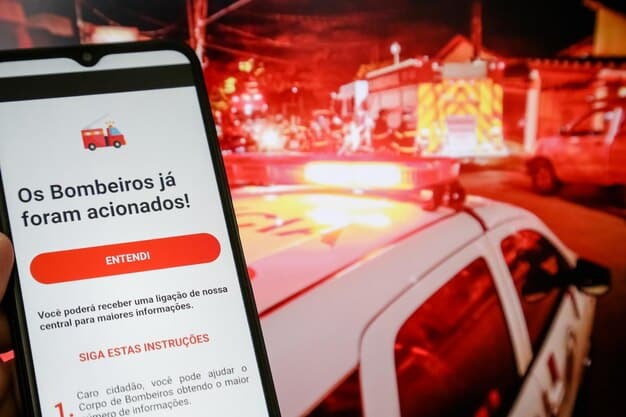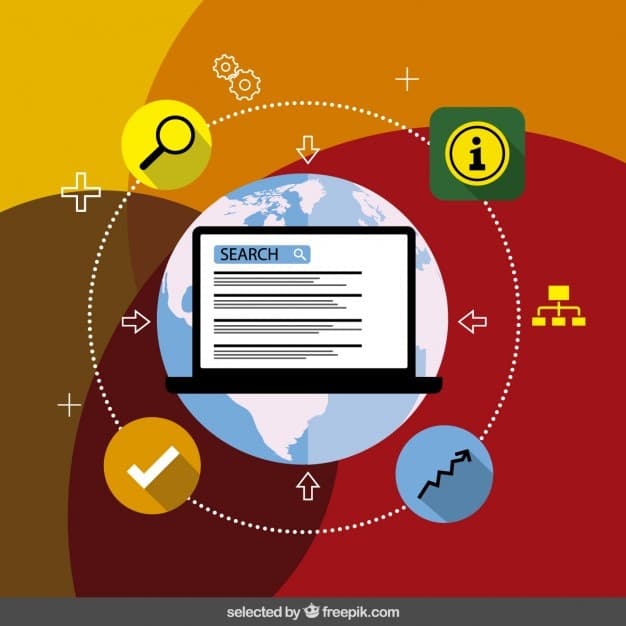Public Safety Reporting in the Social Media Age: Combating Misinformation

Public safety reporting in the social media age requires managing the rapid spread of information and misinformation, necessitating that journalists and public safety officials prioritize accuracy, transparency, and effective communication strategies to maintain public trust and safety.
In the age of instant information, public safety reporting in the social media age: managing information and misinformation has become both a vital service and a complex challenge. The speed and reach of social media can disseminate crucial updates during emergencies, but also amplify inaccuracies or panic. It’s imperative for journalists and public safety officials to navigate this landscape effectively, ensuring the public receives timely and reliable information.
The Evolving Landscape of Public Safety Reporting
The field of public safety reporting has undergone a significant transformation in recent years. Where traditional media once served as the primary source of information, social media platforms now play a crucial role in disseminating news and updates, especially during emergencies.
This shift has created both opportunities and challenges for those tasked with keeping the public informed. While social media can facilitate rapid communication, it also presents a breeding ground for misinformation, rumors, and even outright lies that can undermine public trust and potentially jeopardize safety.

The Role of Social Media in Emergencies
During crises such as natural disasters, terrorist attacks, or public health emergencies, social media has become an invaluable tool for disseminating information. Public safety agencies and news organizations can use platforms to provide real-time updates, warnings, and instructions to affected communities.
Citizen journalists, equipped with smartphones and social media accounts, often capture and share on-the-ground footage and eyewitness accounts that can supplement traditional reporting. This democratization of newsgathering can provide a more comprehensive and immediate picture of evolving situations.
- Rapid Dissemination: Social media allows for the immediate spread of critical information, reaching a large audience quickly.
- Community Engagement: Platforms enable direct interaction between public safety officials, journalists, and the public, fostering dialogue and addressing concerns.
- Real-time Updates: Social media facilitates the sharing of up-to-the-minute information as events unfold, keeping the public informed and prepared.
However, the immediacy and reach of social media also present significant risks. Unverified information, rumors, and malicious content can spread rapidly, causing confusion, panic, and potentially hindering effective response efforts. Therefore, responsible use of social media is paramount.
Combating Misinformation and Fake News
One of the most pressing challenges in public safety reporting in the age of social media is combating the spread of misinformation and fake news. The ability to quickly verify information and distinguish between credible sources and malicious actors is crucial.
With the increasing sophistication of fake news tactics, including deepfakes and manipulated content, it has become more difficult for the public to discern what is real and what is not. Journalists and public safety officials must, therefore, adopt robust verification processes and transparency measures.
Strategies for Information Verification
To effectively combat misinformation, news organizations and public safety agencies must prioritize fact-checking and verification. This includes cross-referencing information with multiple reliable sources, verifying the authenticity of images and videos, and debunking false claims promptly.
Collaborations between journalists, fact-checkers, and social media platforms can also help to quickly identify and flag misinformation. These partnerships can leverage technology and expertise to identify and remove harmful content, while also promoting media literacy among the public.
Building Trust Through Transparency
Transparency is essential for building and maintaining public trust in the age of social media. Public safety agencies and news organizations should be open about their sources, methods, and any potential biases.
Sharing detailed information about how decisions are made and how information is verified can help to build credibility and demonstrate a commitment to accuracy. This approach can also encourage the public to be more discerning consumers of news and information.
- Cross-referencing: Always verify information with multiple reliable sources before publishing or sharing.
- Image Verification: Use reverse image search tools to check the authenticity and context of images and videos.
- Source Credibility: Evaluate the reputation and expertise of sources before trusting their information.
Overall, a commitment to transparency and verification is vital in countering the harmful effects of misinformation and building confidence in public safety reporting in the social media era.
The Impact on Public Perception and Trust
The rise of social media has significantly impacted public perception and trust in traditional institutions, including news organizations and public safety agencies. The constant stream of information, combined with the potential for misinformation, has created a more skeptical and divided public.
With the fragmentation of media consumption, individuals are increasingly exposed to news and information that aligns with their existing beliefs, which can reinforce biases and lead to polarization. This makes it more difficult to promote a shared understanding of public safety issues and to build consensus around solutions.
Navigating the Polarization of Information
To address the challenges of polarization, public safety reporters must strive to present information in a balanced and unbiased manner. This includes seeking out diverse perspectives, avoiding inflammatory language, and focusing on facts rather than opinions.
By presenting credible and evidence-based information, journalists can help to bridge divides and foster more informed public discourse. It is also essential to engage with communities directly, addressing concerns and correcting misinformation through social media and other channels.

Building Credibility in the Digital Age
In an era of declining trust in institutions, public safety agencies and news organizations must actively work to build and maintain credibility. This involves adhering to high ethical standards, being transparent about sources and methods, and being accountable for errors.
Engaging with the public in a respectful and responsive manner can also help to build trust. This includes actively monitoring social media channels, addressing concerns promptly, and being willing to correct misinformation or inaccuracies.
In conclusion, by navigating polarization carefully and building credibility actively, public safety reporting can continue to play a vital role in serving the public good and ensuring informed civic discourse.
Ethical Considerations for Reporters
Reporting on public safety incidents requires careful consideration of ethical responsibilities. The speed and reach of social media have heightened the potential for causing harm through inaccurate or insensitive reporting. Balancing the public’s right to know with the need to protect individuals and communities is a complex and ongoing challenge.
Ethical standards must guide reporting on sensitive subjects, such as accidents, crimes, and natural disasters. Avoiding sensationalism, protecting the privacy of victims, and being mindful of the potential impact on communities are all essential considerations.
Balancing Public Interest and Privacy
Journalists must carefully balance the public interest in knowing about public safety events with the need to protect the privacy of individuals involved. This includes avoiding the publication of sensitive information that could cause harm or compromise ongoing investigations.
Respecting the dignity of victims and their families is also paramount. This means avoiding intrusive or insensitive reporting and seeking permission before publishing images or videos of individuals affected by traumatic events.
- Avoid Sensationalism: Refrain from using sensational language or images that could exploit or inflame public emotions.
- Protect Privacy: Be mindful of the privacy rights of individuals and avoid publishing sensitive information that could cause harm.
- Respect Victims: Treat victims and their families with respect and avoid intrusive or insensitive reporting.
By adhering to high ethical standards, journalists can ensure that public safety reporting is both informative and responsible, serving the public interest while minimizing potential harm.
Tools and Technologies for Effective Reporting
The digital age has provided an array of tools and technologies that can enhance the effectiveness of public safety reporting. From data visualization to social media monitoring, these resources can help journalists gather, verify, and present information more efficiently and accurately.
Leveraging technology for data analysis can reveal patterns and trends that might otherwise go unnoticed. Additionally, social media monitoring tools can aid in tracking emerging threats, identifying misinformation, and engaging with communities in real time.
Data Visualization and Mapping
Data visualization tools can help to present complex information in a clear and compelling manner. Mapping software, for instance, can be used to illustrate the geographic distribution of crime, accidents, or disease outbreaks, providing valuable context for news stories.
By using data visualization effectively, journalists can make public safety information more accessible and understandable, empowering the public to make informed decisions.
Social Media Monitoring Tools
Social media monitoring tools can help journalists track breaking news, identify emerging threats, and monitor public sentiment. These tools can also be used to identify and debunk misinformation, as well as to engage with communities in real time.
By actively monitoring social media, journalists can stay ahead of the curve and provide timely and accurate information to the public. This is particularly important during emergencies, when social media can be a critical source of updates and insights.
In summary, utilizing the right tools and technologies can significantly improve the accuracy, efficiency, and impact of public safety reporting. By embracing these resources, journalists can better serve the public interest and contribute to safer, more informed communities.
Training and Education for Journalists
To effectively navigate the complexities of public safety reporting in the age of social media, journalists need specialized training and education. This includes skills in fact-checking, data analysis, ethical decision-making, and social media management.
With the rapid evolution of technology and the increasing sophistication of misinformation tactics, ongoing professional development is crucial. News organizations and journalism schools must invest in providing journalists with the knowledge and skills they need to succeed in this challenging environment.
The Importance of Fact-Checking Skills
Fact-checking is a fundamental skill for all journalists, but it is particularly critical in public safety reporting. Journalists must be able to quickly and accurately verify information from a variety of sources, including social media, government agencies, and eyewitness accounts.
Training in fact-checking techniques, such as reverse image searching, source verification, and cross-referencing, can help journalists avoid spreading misinformation and uphold the highest standards of accuracy.
Ethical Considerations in Reporting
Journalists must also be well-versed in the ethical considerations that guide public safety reporting. This includes understanding the principles of fairness, accuracy, and impartiality, as well as the importance of protecting privacy and avoiding harm.
Ethical training can help journalists navigate complex situations, such as reporting on traumatic events or interviewing victims, and make responsible decisions that serve the public interest while minimizing potential harm.
Ultimately, investing in training and education is essential for ensuring that public safety reporting remains a trusted and reliable source of information in the social media age. By equipping journalists with the necessary skills and knowledge, we can strengthen our communities and promote a more informed and engaged citizenry.
| Key Point | Brief Description |
|---|---|
| 🚨 Rapid Dissemination | Social media allows for fast distribution of vital information during emergencies. |
| ✅ Information Verification | It is necessary to verify information through reliable sources. |
| 🤝 Community Trust | Building and maintaining public trust requires transparency and ethical conduct. |
| 👨🏫 Journalist Training | Continuous training on fact-checking and ethics is crucial for journalists. |
Frequently Asked Questions (FAQ)
▼
It’s crucial because social media spreads information rapidly, including misinformation. Accurate reporting helps the public stay informed and safe during emergencies.
▼
They cross-reference information with reliable sources, verify the authenticity of images and videos, and consult with experts to confirm facts before reporting.
▼
Ethical considerations include protecting the privacy of victims, avoiding sensationalism, and balancing the public’s right to know with the potential for harm.
▼
Useful tools include data visualization software, social media monitoring tools, and mapping applications to present information clearly and monitor emerging trends effectively.
▼
The public can verify information before sharing, support credible news sources, and report misinformation they encounter on social media platforms to help minimize its spread.
Conclusion
In conclusion, public safety reporting in the social media age: managing information and misinformation is critical for informed communities. Responsible journalism blends ethical practices with technology to combat misinformation, fostering public trust and safety during dynamic events.





